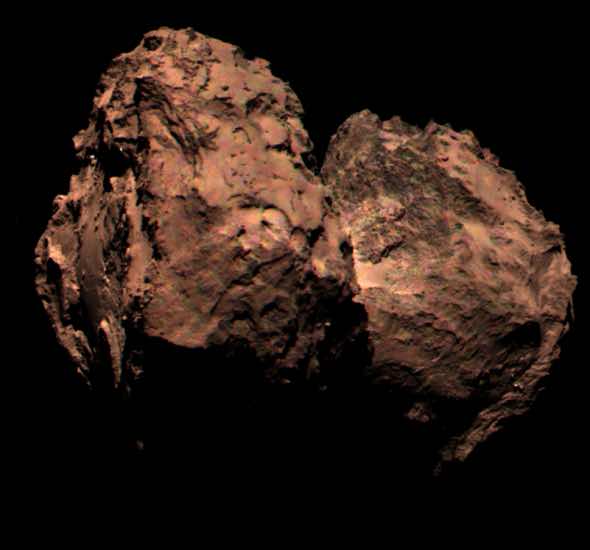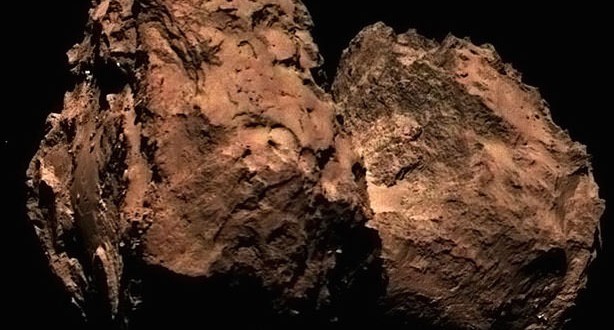Photos of the historic landing on Comet 67P/Churyumov-Gerasimenko seen by the public are all in grayscale.
The European Space Agency has, however, just released a color photo taken by the Rosetta probe that shows the comet’s true colors, which is a shade of reddish brown.
We can thank Rosetta’s OSIRIS camera for the photo, seen below:

If you were hoping for some fantastical sci-fi space colors, remember that 67P is a rock, after all, resembling the browns of an Earth desert, or even the red-browns of the Martian landscape.
The OSIRIS camera doesn’t have color sensors, but instead places filters in front of its sensors to take individual photos in different ranges of light. The ESA then takes those individual photos and combines them for a “true color” image, which is what we’re seeing here.
Though it’s refreshing to see a color photo of 67P, the above original image came out a little blurry. That’s because the comet actually moved a bit during OSIRIS’ exposure. Redditor IG-64 touched the photo up a smidgen, sharpening and color-correcting the original blurry image, seen below.

If this isn’t enough to satisfy your insatiable lust of looking at comets, a higher resolution image will be released on December 18, just in time for the holidays.
Agencies/Canadajournal
 Canada Journal – News of the World Articles and videos to bring you the biggest Canadian news stories from across the country every day
Canada Journal – News of the World Articles and videos to bring you the biggest Canadian news stories from across the country every day



